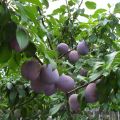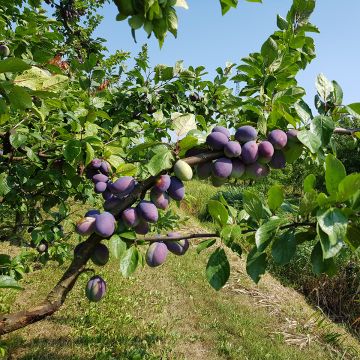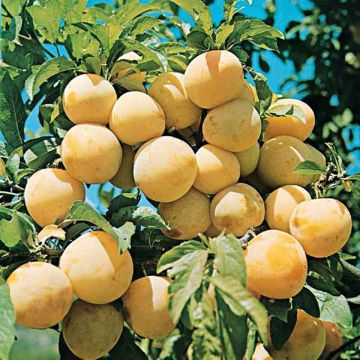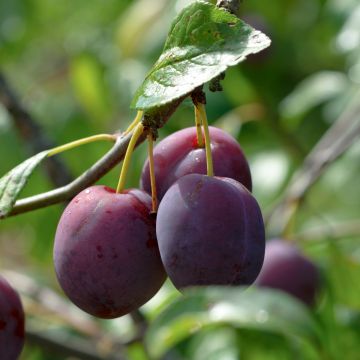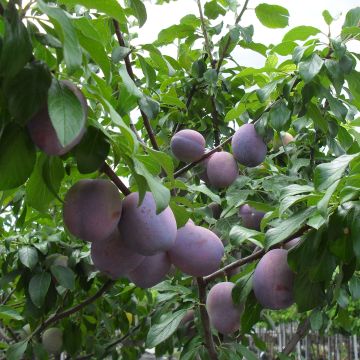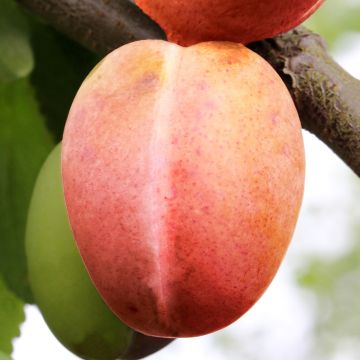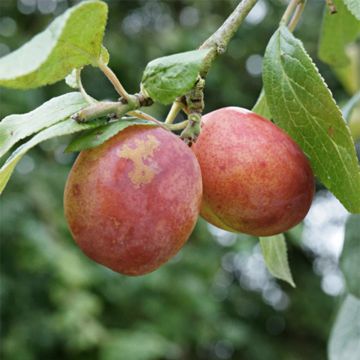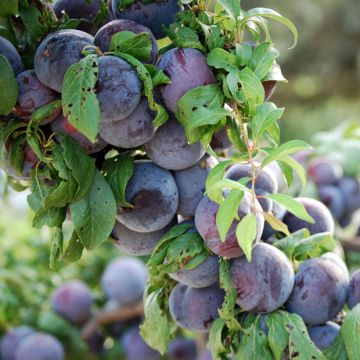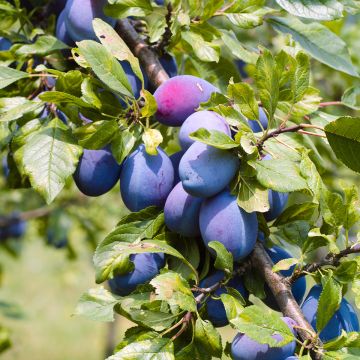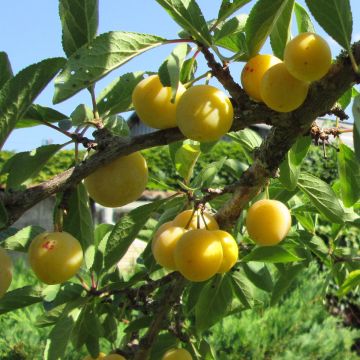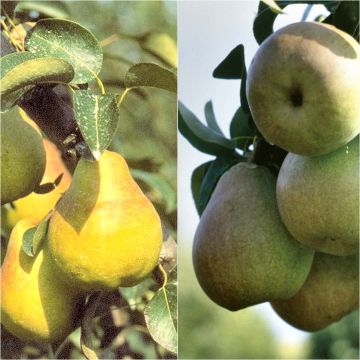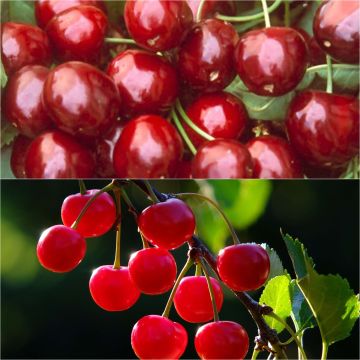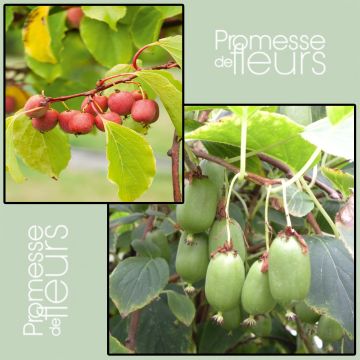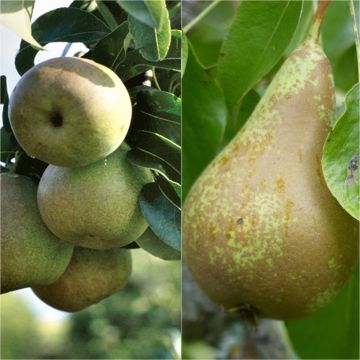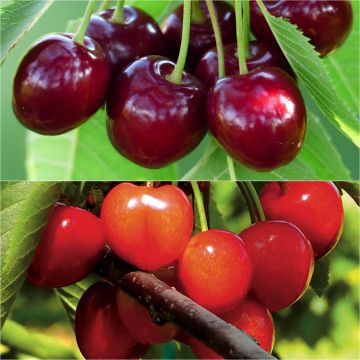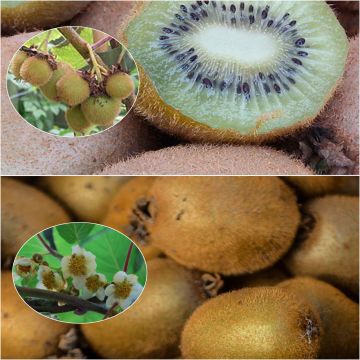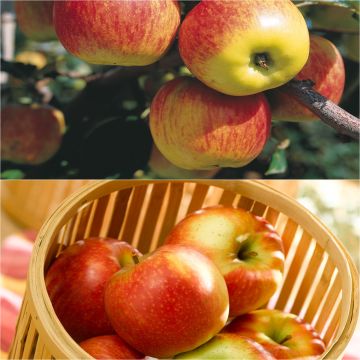País e idioma de entrega
Tu lugar de residencia parece ser:
Tu lugar de residencia es:
Para disfrutar de la mejor experiencia en nuestro sitio, puedes cambiar:
País de entrega:
Alemania
Andorra
Austria
Bulgaria
Bélgica
Canadá
Chequia
Chile
Chipre
Croacia
Dinamarca
Eslovaquia
Eslovenia
España
Estonia
Finlandia
Francia
Grecia
Hungría
Irlanda
Islandia
Italia
Letonia
Lituania
Luxemburgo
Malta
Mónaco
Países Bajos
Polonia
Portugal
Reino Unido
Rumanía
Suecia
Suiza
Sólo enviamos artículos de las categorías semillas y bulbos a tu país. Si añades otros artículos a tu cesta, no se podrán enviar.
Idioma:
Francés
Alemán
Español
Inglés
My Account
Hola
Mis listas de favoritos
Plantfit
Mi cesta
Inicio de sesión / Registro
¿Ya eres cliente?
¿Todavía no eres cliente?
Crea su cuenta para poder realizar el seguimiento de tu pedido, acceder a nuestro servicio de atención al cliente y, si lo deseas, beneficiar de nuestras próximas ofertas.
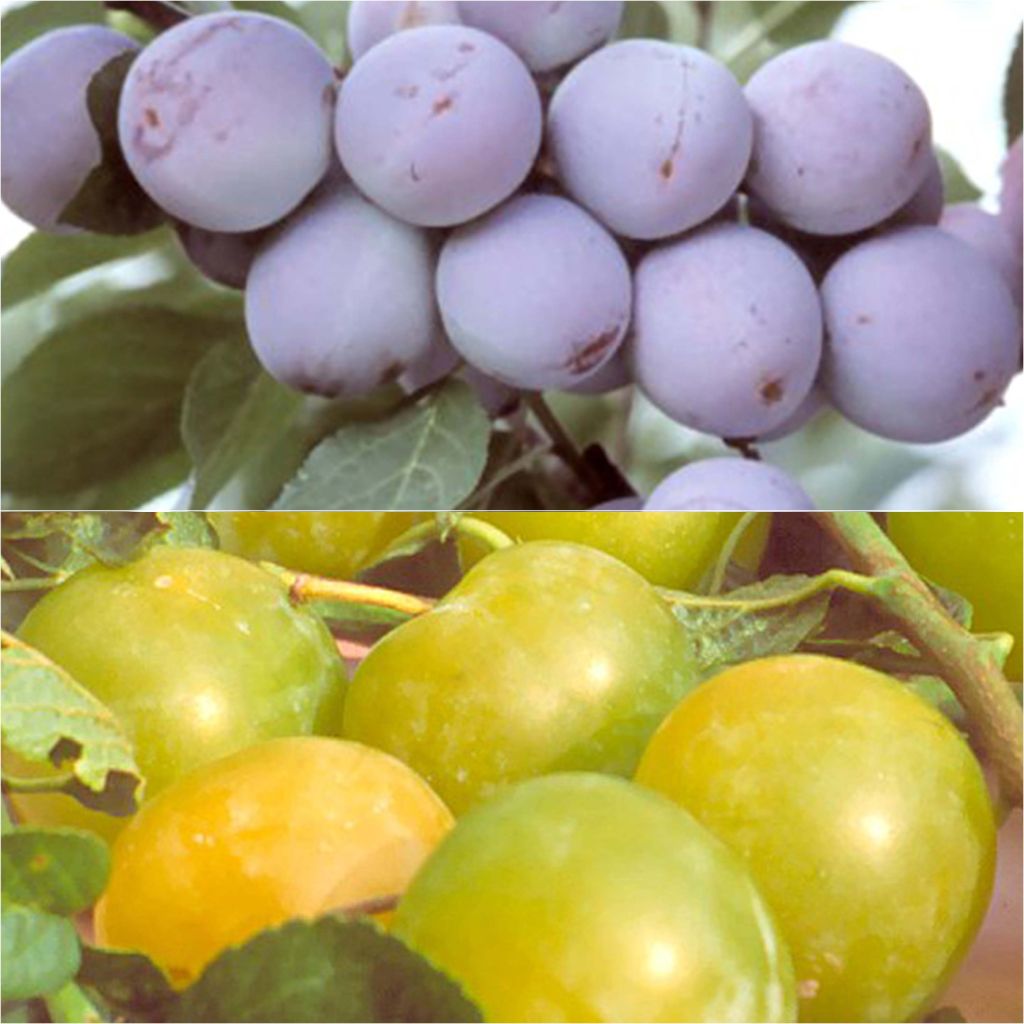

Duo Pollinator Plum Trees Bio
Duo Pollinator Plum Trees Bio
Prunus domestica Reine Claude d'Althan, Reine Claude Dorée
Más de para que tu pedido salga hoy mismo.
Enviado por correo a partir del
Gastos de transporte a partir de 5,90 €. Artículos grandes, gastos de envío a partir de 6,90 €.
Más información
Este artículo no está disponible para tu país.
País de entrega:
Alemania
Andorra
Austria
Bulgaria
Bélgica
Canadá
Chequia
Chile
Chipre
Croacia
Dinamarca
Eslovaquia
Eslovenia
España
Estonia
Finlandia
Francia
Grecia
Hungría
Irlanda
Islandia
Italia
Letonia
Lituania
Luxemburgo
Malta
Mónaco
Países Bajos
Polonia
Portugal
Reino Unido
Rumanía
Suecia
Suiza
Programa tu fecha de entrega,
y elige tu fecha en la cesta
6 meses de garantía en el desarrollo de esta planta
Más información
Garantizamos la calidad de nuestras plantas durante un ciclo vegetativo completo, y sustituiremos a nuestro cargo cualquier planta que no se recupere en condiciones climáticas y de plantación normales.
Desde 5,90 € para entrega en un punto de recogida y 6,90 € para entrega a domicilio
Entrega a domicilio exprés en 24-48 horas: 8,90 €.
Composición de esta colección (2 plantas)
Descripción
This organic duo of Reine Claude plums features the excellent varieties 'Reine Claude d'Althan', producing large round and absolutely delicious violet plums, and 'Reine Claude Dorée', with round fruits that are yellow-green tinged with golden yellow in the sun, renowned for their juicy and sweet flesh. These two plum trees cross-pollinate, promoting good production. The plum harvest extends from mid-August to September. Bare-root scions from Organic Agriculture. Preferably plant in autumn.
This duo consists of:
- x1 Organic Reine Claude d'Althan Plum Tree: excellent old variety, vigorous, with abundant, fairly regular, and quality production. The tree, reaching 6 m in height, produces large round fruits, somewhat flattened, covered with a reddish-purple, even violet skin. Their thick yellow flesh is fine, juicy, and fragrant. The harvest takes place from mid-August to September. This variety, non-self-fertile, originates from Hungary and was selected in 1860 by the gardener of Count d'Althan. It will be pollinated by the Golden Reine Claude.
- x1 Organic 'Reine Claude Dorée': a variety that has been introduced for a long time in the southwest, easy to grow, renowned for the flavour of its large round plums. The tree can reach 8 m in height. Its fruits reach maturity around mid-August, they are round and measure about 4 cm in diameter. They have a thin, yellowish-green skin, with a golden side where the plum receives the sun. The pale yellow flesh is juicy, sweet, and aromatic: it is of excellent taste quality. A very good pollinating variety, the Golden Reine Claude is not self-fertile and requires the presence of another plum tree to fruit satisfactorily. A bit sensitive to fruit splitting before maturity but without moniliasis, this plum tree is a variety tolerant to Bark-Split Disease and withstands handling and transport well.
Individually labelled.
The original area of plum trees is said to be Syria, not China. During the time of Roman hegemony in the region, various local fruits including plums were introduced to Rome. This fruit tree has a free and spreading habit. Properly pruned, it will be easy to harvest. It requires little care and maintenance thanks to the natural openness of its branches. It enjoys sunlight or partial shade and thrives in any type of rich, moist, deep soil, even heavy, but not calcareous.
Its deciduous leaves are oval, almost oblong, serrated-toothed, and slightly pubescent. They fall in autumn. The flowering occurs in April.The tree is then completely covered with white flowers that appear on leafless branches from the previous year. They are not self-fertile. It is therefore necessary to plant another plum tree nearby to obtain fruits.
Designed for organic management, the cultivation of the Organic Plum Tree will thrive under certain conditions. To prevent diseases and pests, you will need to:
- choose a deep, light, rich, and well-draining soil,
- avoid planting in an area that previously hosted other woody plants,
- prune to promote tree ventilation,
- thin out to prevent fruit disease,
- add compost in autumn, in limited quantities depending on your soil richness, and plant grass around the base,
- set up multi-species hedges (except prunus), rock and wood piles, and nest boxes (birds, voles, and bats) to attract beneficial insects.
If a disease appears, removing and burning the affected parts will be necessary.
Plums are consumed fresh at the base of the tree, in fruit salads, but also as desserts, pastries, with meats and dishes. They are used for making jams, of course, but also in syruped fruits, compotes... They can also be distilled into brandy.
For transportation reasons, our tallest scions may be pruned before shipping. They are suitable for all common training sizes: cordons, espaliers, bush trees, half-standards, and low standards, except for tall standards. If you would like more information or advice on training your fruit trees, feel free to contact us.
Porte
Fruta
Floración
Follaje
Botánica
Prunus
domestica
Reine Claude d'Althan, Reine Claude Dorée
Rosaceae
Hortícola
Otras Ciruelo - Mirabel
Plantación y cuidados
The Prunier Reine Claude Organic grows in any type of light, rich, neutral or acidic soil, moist but not excessively humid and without limestone. Ensure proper drainage in the planting hole with a thin layer of gravel. Dig a good hole two to three weeks before planting. On planting day, place the tree in a basin of water to moisten the entire root ball. Add compost to the bottom of the hole. Position the tree in the hole, backfill with soil mixed with compost. Do not bury the graft union. Firmly tamp down the soil around the base. The root ball should be completely covered. Water generously.
You can add a small handful of wood ash, rich in potash, during winter, to improve fruiting.
¿Cuándo plantar?
¿En qué lugar?
Cuidado
Este artículo todavía no ha recibido comentarios; sé el primero en compartir tu experiencia.
Colecciones de árboles frutales y frutos pequeños
¿No has encontrado lo que buscas?
La rusticidad es la temperatura invernal más baja que una planta puede soportar sin sufrir daños graves o incluso la muerte. Sin embargo, la rusticidad se ve afectada por la ubicación (zona protegida, como un patio), la protección (cubierta de invierno) y el tipo de suelo (la rusticidad mejora con un suelo bien drenado).

Condiciones generales de uso del servicio de fotos del cliente
Con el fin de favorecer la interacción y el intercambio de experiencias entre jardineros, Promesse de fleurs ofrece varios servicios que permiten cargar contenidos en su Sitio web, en particular a través del módulo "Compartir fotos".
El usuario se compromete a no:
- Publicar contenidos ilegales, perjudiciales, insultantes, racistas, que inciten al odio, revisionistas, contrarios a las buenas costumbres, que atenten contra la vida privada o vulneren los derechos privados de terceros, en particular el derecho a la imagen de las personas y de los bienes, los derechos de propiedad intelectual o el derecho a la vida privada
- Publicar contenidos en nombre de un tercero
-
Asumir la identidad de un tercero y/o publicar cualquier información personal sobre un tercero
En general, los Usuarios se comprometen a abstenerse de cualquier comportamiento poco ético.
Todos los Contenidos, en particular, textos, comentarios, archivos, imágenes, fotos, vídeos, obras, etc., que pueden ser objeto de derechos de propiedad, derechos de propiedad intelectual, derechos de imagen u otros derechos privados, siguen siendo propiedad del Usuario, a reserva de los derechos limitados concedidos por la licencia definida a continuación a Promesse de fleurs. El Usuario es libre de publicar o no dicho Contenido en el Sitio web, especialmente a través del servicio "Compartir fotos", y acepta que este Contenido se haga público y libremente accesible, especialmente en Internet.
Reconocen, se comprometen y garantizan que disponen de todos los derechos y autorizaciones necesarios para dicha publicación en el Sitio, en particular en lo que respecta a la legislación vigente y a los derechos de privacidad, propiedad, propiedad intelectual, imagen, contratos o de cualquier otra naturaleza. Al publicar dicho Contenido en el Sitio, el Usuario es consciente de que compromete su responsabilidad como editor del Contenido en el sentido de la ley, y concede a Promesse de fleurs una licencia no exclusiva, gratuita y mundial para dicho Contenido, durante toda la duración de su publicación, incluidos los derechos de reproducción, representación, carga, visualización, ejecución, transmisión y almacenamiento.
Los usuarios también autorizan a que su nombre se asocie al Contenido y aceptan que esta asociación no siempre pueda realizarse.
Mediante su publicación, los usuarios autorizan que los Contenidos sean automáticamente accesibles en Internet, en particular en otros sitios y/o blogs y/o páginas web del sitio Promesse de fleurs, incluidas en particular las páginas de las redes sociales y el catálogo de Promesse de fleurs.
Los usuarios pueden obtener libremente la devolución de los contenidos confiados poniéndose en contacto con el servicio de atención al cliente a través del formulario de contacto.
Los periodos de siembra indicados en nuestro sitio web se aplican a los países y regiones de la zona 8 del USDA (Francia, Reino Unido, Irlanda, Países Bajos).
En zonas más frías (Escandinavia, Polonia, Austria...), retrase 3-4 semanas cualquier siembra al aire libre, o siembre en invernadero.
En climas más cálidos (Italia, España, Grecia, etc.), adelante unas semanas la siembra al aire libre.
El periodo de recolección indicado en nuestro sitio web se aplica a los países y regiones de la zona USDA 8 (Francia, Inglaterra, Irlanda, Países Bajos).
En las zonas más frías (Escandinavia, Polonia, Austria...) es probable que la cosecha de frutas y hortalizas se retrase 3-4 semanas.
En las zonas más cálidas (Italia, España, Grecia...), es probable que la cosecha se adelante, dependiendo de las condiciones meteorológicas.
El periodo de plantación indicado en nuestro sitio web se aplica a los países y regiones situados en la zona USDA 8 (Francia, Reino Unido, Irlanda, Países Bajos).
Variará en función de su lugar de residencia:
- En las zonas mediterráneas (Marsella, Madrid, Milán, etc.), el otoño y el invierno son los mejores periodos de plantación.
- En las zonas continentales (Estrasburgo, Múnich, Viena, etc.), retrase la plantación de 2 a 3 semanas en primavera y adelántela de 2 a 4 semanas en otoño.
- En las regiones montañosas (Alpes, Pirineos, Cárpatos, etc.), es mejor plantar a finales de primavera (mayo-junio) o a finales de verano (agosto-septiembre).
En climas templados, la poda de los arbustos de floración primaveral: forsitia, spireas, etc. debe realizarse justo después de la floración.
La poda de los arbustos de floración estival: árbol de Júpiter, perovskia, etc. puede realizarse en invierno o en primavera.
En las regiones frías y con plantas sensibles a las heladas, evite podar demasiado pronto, cuando aún pueden producirse heladas severas.
El periodo de floración indicado en nuestra página web se aplica a los países y regiones situados en la zona USDA 8 (Francia, Reino Unido, Irlanda, Países Bajos, etc.).
Variará en función de su lugar de residencia:
- En las zonas 9 a 10 (Italia, España, Grecia, etc.), la floración se producirá entre 2 y 4 semanas antes.
- En las zonas 6 a 7 (Alemania, Polonia, Eslovenia y regiones montañosas bajas), la floración se retrasará de 2 a 3 semanas.
- En la zona 5 (Europa Central, Escandinavia), la floración se retrasará de 3 a 5 semanas.
